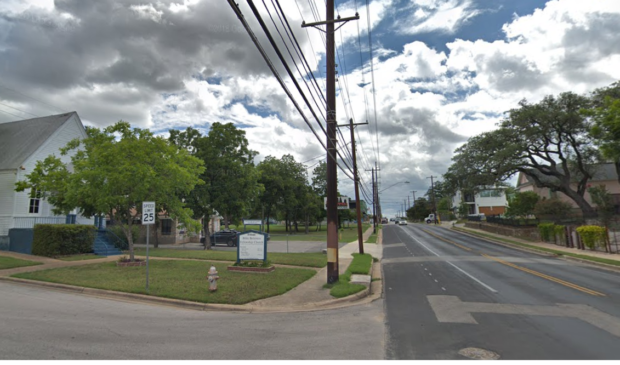Eureka waiting for Land Development Code changes to shape East Austin holdings
Wednesday, January 15, 2020 by
Chad Swiatecki Eureka Holdings is continuing to plan work and community engagement related to its many holdings in East Austin, but a local consultant for the company said slow progress on the city’s new Land Development Code has put most other projects for the Dallas-based developer on hold.
At Monday’s meeting of the Urban Renewal Board, consultant Trey Salinas delivered the latest update for the body that is charged with guiding redevelopment efforts along East 11th and 12th streets. While repeatedly stating “we are not in a holding pattern,” his message was that the zoning that will be instituted for properties just outside the low-density planned for the urban renewal zone will have a significant impact on what the company does with its properties.
Eureka has been on an East Austin buying spree in recent years, and as of October the developer had purchased more than four dozen properties on 12th Street between Interstate 35 and Walnut Street.
Salinas said early indications are that areas outside the coverage of the under-review Urban Renewal Plan will be able to have between four and eight units based on affordability parameters. He also said a proposed equity overlay could further reshape what developers are able to do outside of the urban renewal area.
“We are still underway with our planning efforts and continue to have discussions with the city and stakeholders, but currently we’re all in the same position of waiting to see what this Land Development Code looks like in terms of zoning maps,” he said.
“Obviously we’ve got properties inside the Urban Renewal boundaries as well as properties outside the Urban Renewal boundaries and some are directly adjacent to what’s outside. Until we know what Council decides in terms of the zoning maps, transition zones and so forth, we have to see what that’s going to look like as we try to move forward.”
In discussing work that’s underway, he said Eureka is at work on a cultural asset study for the intersection of 12th and Comal streets – particularly the historic Southgate Lewis House and the I.Q. Hurdle House – with the goal of turning that area into a cultural hub for the future redevelopment.
No action was taken regarding Eureka’s plans, which were most significantly laid out at the board’s October meeting with conceptual plans showing how the company aims to connect Boggy Creek and Waller Creek while reducing vehicle traffic in the area.
Salinas said once the land code is finalized later this year it would be helpful for Eureka representatives, commission members and related city staff to have a working meeting to discuss how the company can move forward with a plan that reflects the community’s wishes.
Chair Manuel Escobar said the group is looking at how it can continue to shape the future of the district once it is finished with updating the Urban Renewal Plan in the coming months.
“We have internal continuing existential questions about what our role is going to be after we’re done updating the plan,” he said. “Other people have different ideas about what our role should be, but I think most of the commissioners have hopes of continuing to be involved with what gets developed under that plan.”
The discovery in recent years that a non-Austin entity had bought up so many properties in the culturally sensitive neighborhood caused concern over its future.
In an interview in December with the Austin Monitor, District 1 Council Member Natasha Harper-Madison said she is encouraged by Eureka’s recent outreach into the community and is hopeful for what the area will look like once work is completed, with the city playing a definite role.
“We need to recognize that the city has mechanisms it can deploy to help make this the best it could possibly be. There are multiple assets that are city-held properties along that corridor, and once I started working on this as a layman I started asking myself how the city could leverage its assets to make certain the community gets what it needs,” she said.
“The vision is good and if they do this well we will definitely be a city that other cities look to when going through any sort of massive revitalization in a historic community while building in the maximum amount of affordability in residential and commercial real estate and not eviscerate a community.”
Photo courtesy of Google Maps.
The Austin Monitor’s work is made possible by donations from the community. Though our reporting covers donors from time to time, we are careful to keep business and editorial efforts separate while maintaining transparency. A complete list of donors is available here, and our code of ethics is explained here.
You're a community leader
And we’re honored you look to us for serious, in-depth news. You know a strong community needs local and dedicated watchdog reporting. We’re here for you and that won’t change. Now will you take the powerful next step and support our nonprofit news organization?








